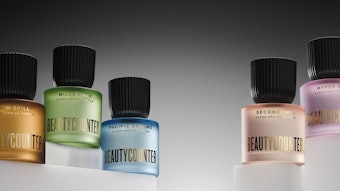Those of us in the home fragrance industry have watched the category evolve dramatically during the past 15 years. Our business used to be about dried flowers in a bag, and then, for a long time, it was all about wax and wicks. The environmental fragrance business grew to produce big numbers—a $4.5 billion opportunity—without anyone paying much attention.
In the past four to five years, the growth trend has been in liquids: room sprays, oils, plug-ins and passive diffusers—products the consumer can use to scent her home without heat or flame. The incredible growth in the overall segment, particularly in reed diffusers and plug-in diffusers, has been very visible. We are now “air care” and the regulators have taken notice.
When our company got into the reed diffuser business eight and a half years ago, the only other products in the space were a few small European brands that were essentially composed of alcohol and fragrance oil. They were certainly not compliant with current VOC (volatile organic compound) regulations on the books with both CARB (California Air Resources Board) and the EPA. Since there was no real enforcement, products quickly came on the market from all over the world, the majority of them noncompliant. If I’m honest, it was only because our clients were specialty stores that required compliance that we invested resources in research and development to formulate within regulation. It would have been easier and less expensive to just put cheap and effective diffusers out to the market and let the chips fall where they may.
Within the past two years, CARB has become diligent about enforcement of VOC regulations. They are issuing violation notices at a record pace, and fines (not to mention loss of business) can be a steep price to pay. Canada will adopt our current VOC regulations, effective Jan. 1, 2009, and there is talk that the EPA is planning to step up oversight of all states. In addition, the folks at CARB have been debating more stringent regulations that may lower the percentage of allowed VOCs in air care products.
All that being said, how does a company continue to innovate in the face of increasing regulatory oversight?
At Maesa Home, we had to change the way we thought about new product development and figure out a way to lead in this category. We decided to become technical experts in the delivery system, and devoted staff, time and financial resources to learning everything we could about regulatory and product efficiencies. Compliant formulations led the way in all our creative discussions, and we involved CARB and other experts along the way.
While increased regulatory measures can sometimes constrain creativity, these measures can also offer an opportunity for thinking differently about technology and consumers. The era of “me too” product development in the home fragrance industry has come to an end, and more advanced and nuanced technologies will determine the leaders in the category.
By working within our industry with our clients, suppliers and competitors to ensure that government oversight is both fair and practical, we keep the playing field level for everyone. If we are in the business for the long term and want our clients and our consumers to keep buying, the challenge of playing by the rules can encourage inventive thinking, stimulate fresh product ideas and afford us the opportunity to change the paradigms of our business.
Jill Belasco is the founder, president and CEO of Maesa Home—a designer, manufacturer and distributer of private label fragrance and personal care products. She has more than 20 years of senior sales management and marketing experience in the cosmetic, fragrance and accessory industries.


![Curious about the latest trends in Beauty and Personal Care innovation? [download free report]](https://native-x.imgix.net/allured/65fde687b40d3e0001e2ce0d/_Thumbnail%20Image%201-19-24.jpg?crop=focalpoint&fit=crop&fp-x=0.5&fp-y=0.5&h=191&w=340&auto=format%2Ccompress&q=70)







